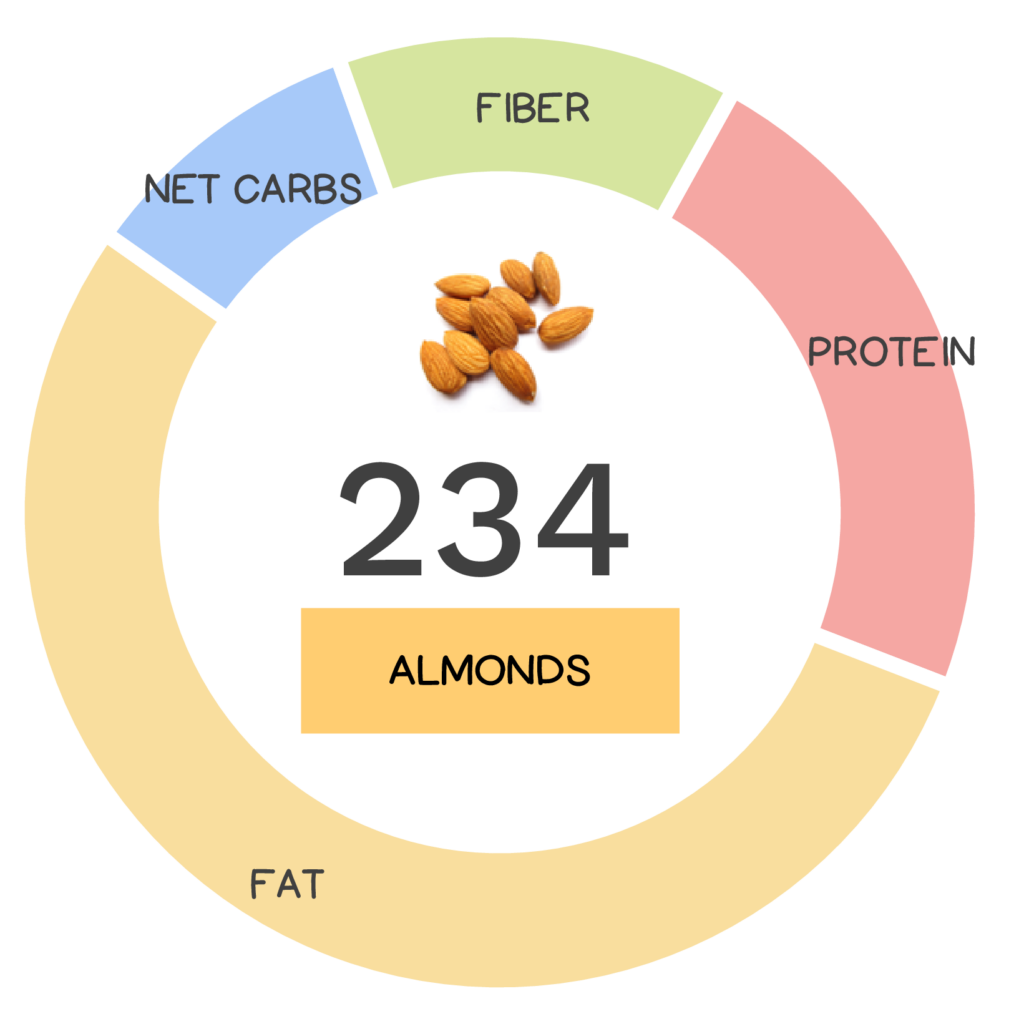
Almonds (Prunus dulcis) are one of the most popular and widely-consumed ‘tree nuts’ world-wide, however they are not actually nuts. Isn’t that “nuts?” Almonds are in fact seeds of the tree’s fruit! To put this in perspective, think of almonds in comparison to other popular members also belonging to the Rosaceae family, such as peaches, apricots and plums. In a peach, we eat the flesh; in almonds, this portion of the fruit is called the hull and is thick, leathery with a grey-green coat and downy exterior. Inside the hull is a hard, woody shell (like the outside of a peach pit) and inside the shell is the edible seed, or as it is more commonly referred to, the almond ‘nut!’
Even though world-wide almonds are one of the most widely-consumed ‘tree nuts’, they are not actually nuts but are in fact seeds of the tree’s fruit!
Almonds are native to the Middle East, India, and North Africa and were one of the earliest domesticated fruit trees, with archeological evidence dating domesticated almonds as early as 3000 to 2000 BC. They are even mentioned in the bible! Almonds are highly revered in some cultures and the ancient Greeks, Persians, Chinese, and Indians habitually consumed them for medicinal purposes. Interestingly, wild almond is toxic to humans, while domesticated almond is not.
Almonds belong to the Rosaceae botanical family, which means they are related to apples, apricots, cherries, peaches, plums, and strawberries.
In 2019, world production of almonds was 3.5 million tonnes! You may be surprised to know that the USA is the largest almond producer, with production concentrated in California, mainly in the Central Valley. Almonds are completely reliant on wild bees and honey bees in order to have their crops pollinated, making declining bee populations a threat for our almond supply. Additional pollinators therefore have to be brought to the trees. The pollination of California’s almonds is the largest annual managed pollination event in the world! Each year, roughly half of all beehives in the USA (1.4 million hives) are required for pollination. During late winter, rented commercial bees are transported by trucks across the US to almond orchards to make this happen! Could that “bee” any cooler? In the last 20 years, the consumption of almonds has risen significantly, suggesting that the status of this nut is evolving from mere convenient snack food to an essential food for maintaining health, owing to its plethora of nutrients (segue).
Learn How All Foods Can Fit into a Healthy Diet

Improve Your Diet Without Restriction
Learn how to take a non-restrictive approach to eat nutrients, enjoy food, and live well.
In this webinar, Dr. Sarah will teach you how use Nutrivore to boost nutrient intake without drastic changes, improve your relationship with food, evaluate your diet’s quality, and adopt a balanced, moderation-focused mindset for long-term success. Say goodbye to the guilt-blame cycle and discover a nourishing approach to eating.
Buy now for instant digital access.
Nutrivore Score for Almonds – 234
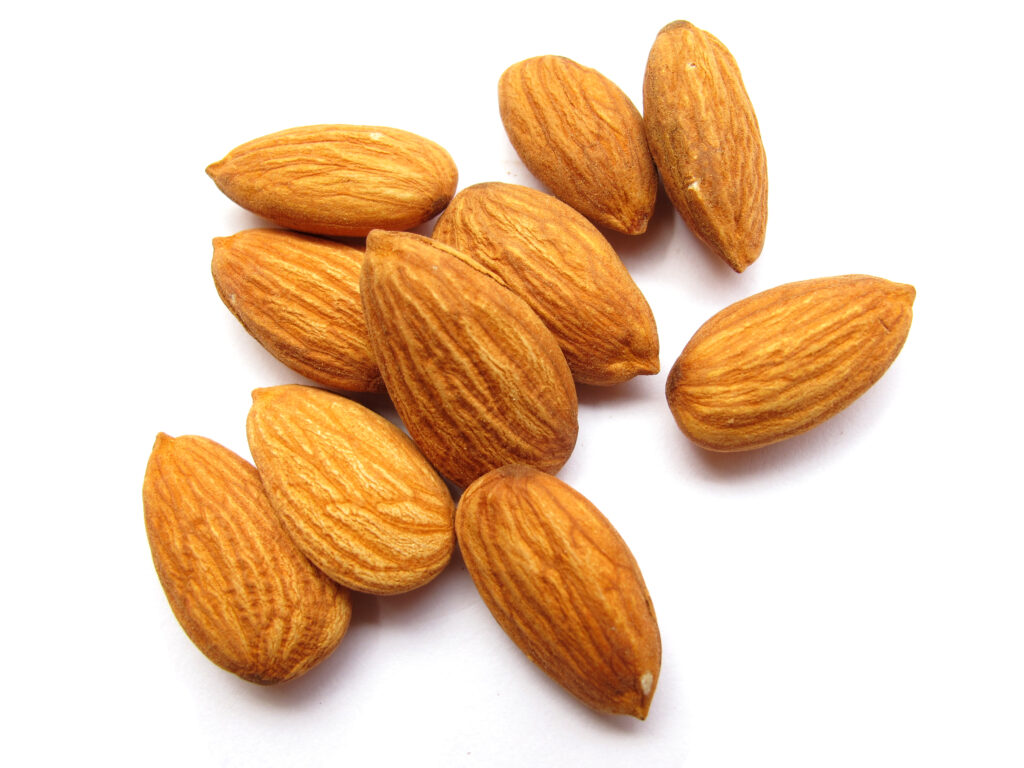
Almonds have a Nutrivore Score of 234, making them a medium nutrient-dense food! Plus, they are a low-carb food; almonds have 2.5 grams of net carbs per 28 gram serving!
Per serving, almonds are a best source (>50% daily value) of vitamin E; an excellent source (20-50% daily value) of copper, linoleic acid, manganese, monounsaturated fatty acids (MUFA), polyphenols, vitamin B7 (biotin), and vitamin B2 (riboflavin); and a good source (10-20% daily value) of dietary fiber, magnesium, phosphorus, and protein.
Ditch Diets. Embrace Nutrients. Start with this FREE Guide.
Sign up for the free Nutrivore Newsletter, your weekly, science-backed guide to improving health through nutrient-rich foods — without dieting harder —and get the Beginner’s Guide to Nutrivore delivered straight to your inbox!

Almond Nutrition Facts
One serving of almonds is standardized to 1 ounce or about 28 grams. To put this in perspective: one serving of almonds roughly equates to a palmful of nuts or approximately 23 almonds.
Almond Nutrition Facts Per Serving
| Almonds, raw | Nutrivore Score: 234 | Nutrient Density: Medium |
|---|---|---|
| Serving Size: 1 ounce (23 almonds) | Protein: 5.9 grams | Net Carbohydrates: 2.5 grams |
| Calories: 162 | Total Fat: 14 grams | Dietary Fiber: 3.5 grams |
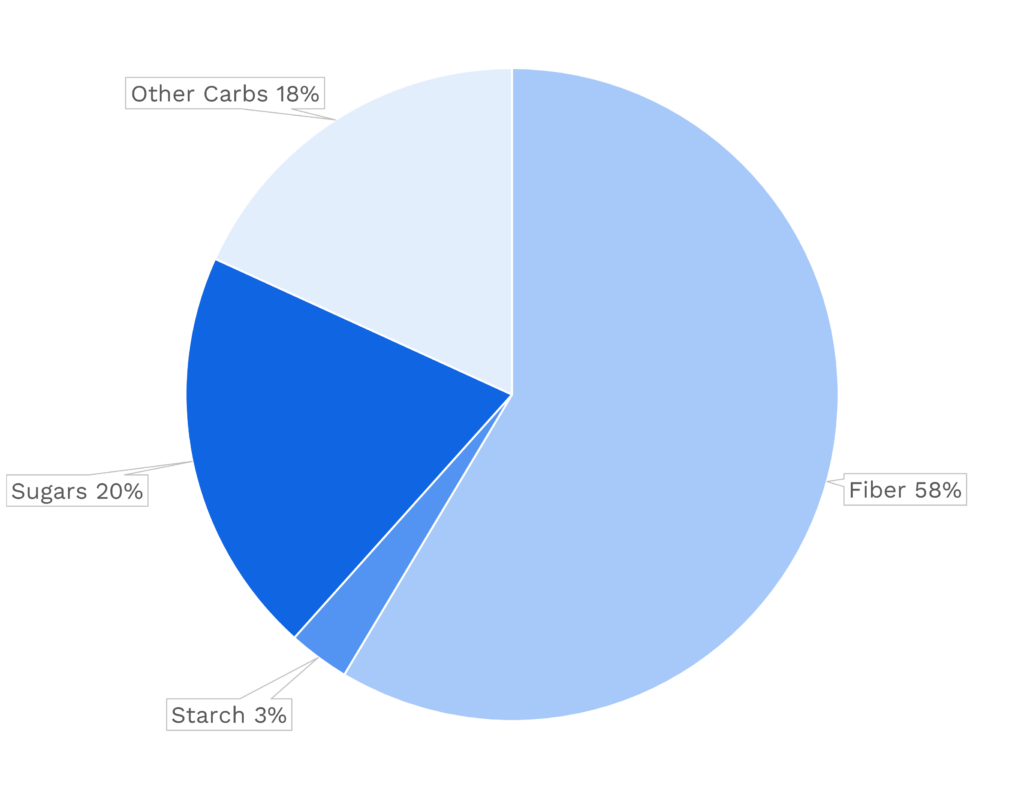
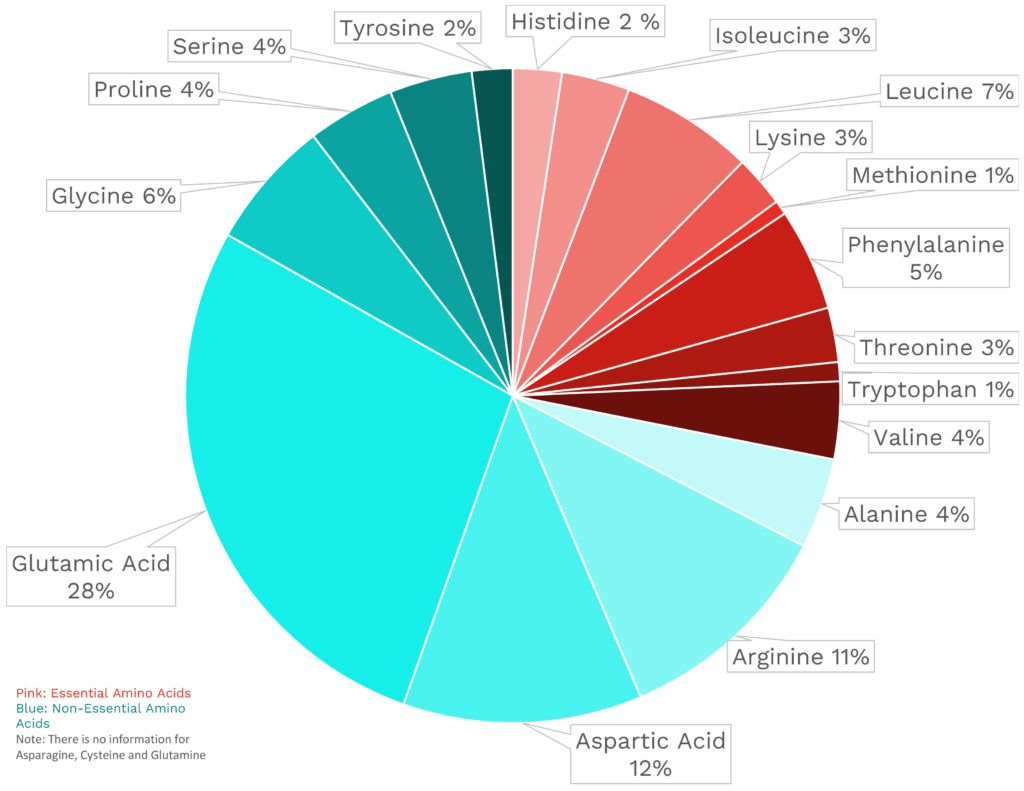

| VITAMINS | ||
|---|---|---|
| Vitamin A | 0.0 μg RAE | 0% DV |
| Vitamin B1 (Thiamin) | 57.4 μg | 5% DV |
| Vitamin B2 (Riboflavin) | 318.6 μg | 25% DV |
| Vitamin B3 (Niacin) | 1.0 mg | 6% DV |
| Vitamin B5 (Pantothenic Acid) | 0.1 mg | 3% DV |
| Vitamin B6 (Pyridoxine) | 38.4 μg | 2% DV |
| Vitamin B7 (Biotin) | 13.5 mg | 45% DV |
| Vitamin B9 (Folate) | 12.3 μg | 3% DV |
| Vitamin B12 (Cobalamin) | 0.0 μg | 0% DV |
| Vitamin C | 0.0 mg | 0% DV |
| Vitamin D (D2 + D3) | 0.0 μg | 0% DV |
| Vitamin E | 7.4 mg | 50% DV |
| Vitamin K | 0.0 μg | 0% DV |
| Choline | 14.6 mg | 3% DV |
| Myo-Inositol | 77.8 mg | ~ |
| CoQ10 | 0.4 mg | ~ |
| FUNCTIONAL FATS | ||
|---|---|---|
| MUFA | 8.8 g | 44% DV |
| ALA | 0.8 mg | 0% DV |
| EPA + DHA | 0.0 mg | 0% DV |
| CLA | 0.6 mg | ~ |
| Linoleic Acid | 3.5 g | 20% DV |
| MCT’s | 0.0 g | ~ |
| MINERALS | ||
|---|---|---|
| Calcium | 75.3 mg | 6% DV |
| Copper | 288.7 μg | 32% DV |
| Iodine | ~ | ~ |
| Iron | 1.0 mg | 6% DV |
| Magnesium | 75.6 mg | 18% DV |
| Manganese | 610.1 μg | 27% DV |
| Phosphorus | 134.7 mg | 11% DV |
| Potassium | 205.2 mg | 4% DV |
| Selenium | 1.1 μg | 2% DV |
| Sodium | 0.3 mg | 0% DV |
| Zinc | 0.9 mg | 8% DV |
| PHYTONUTRIENTS | ||
|---|---|---|
| Carotenoids | 0.6 μg | ~ |
| Polyphenols | 200.7 mg | ~ |
| Phytosterols | 58.2 mg | ~ |
| Glucosinolates | ~ | ~ |
| Thiosulfinates | ~ | ~ |
| Betalains | ~ | ~ |
| AMINO ACIDS & PEPTIDES | ||
|---|---|---|
| Taurine | ~ | ~ |
| Ergothioneine | 0.1 mg | ~ |
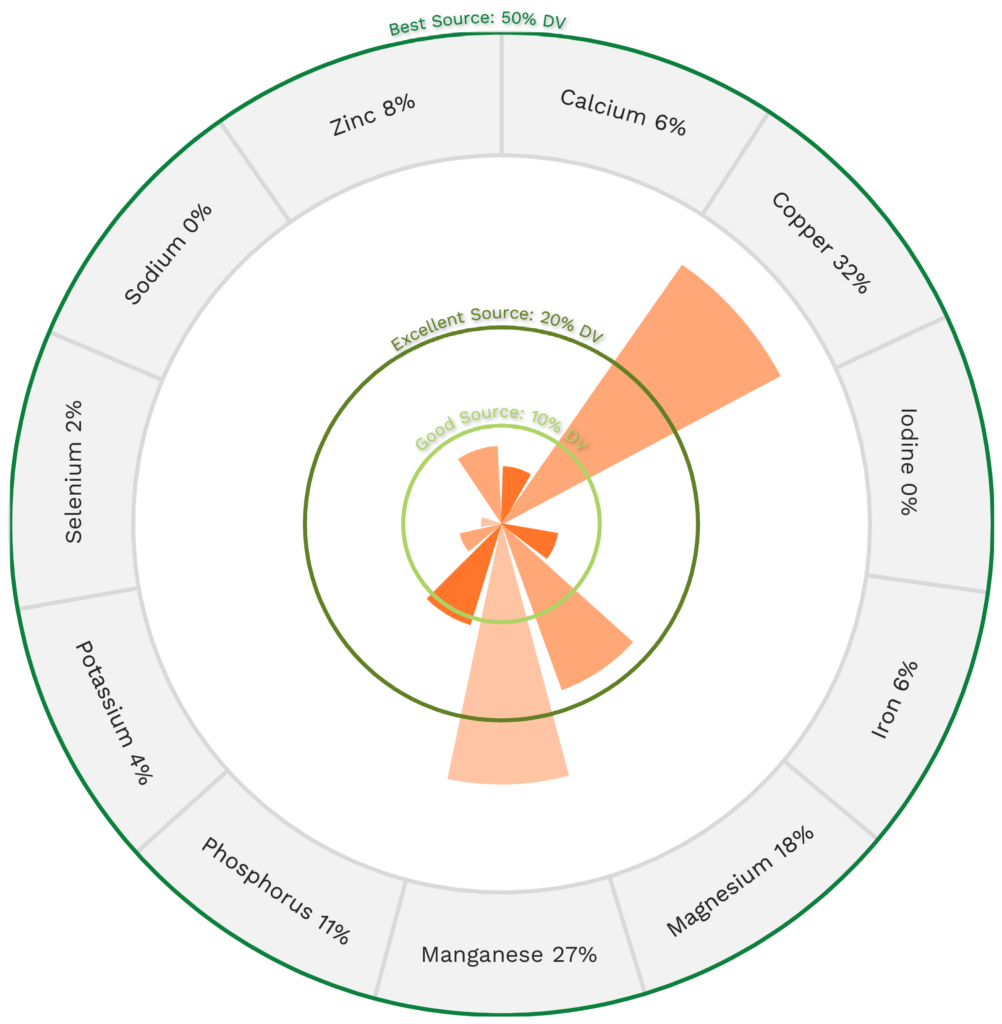

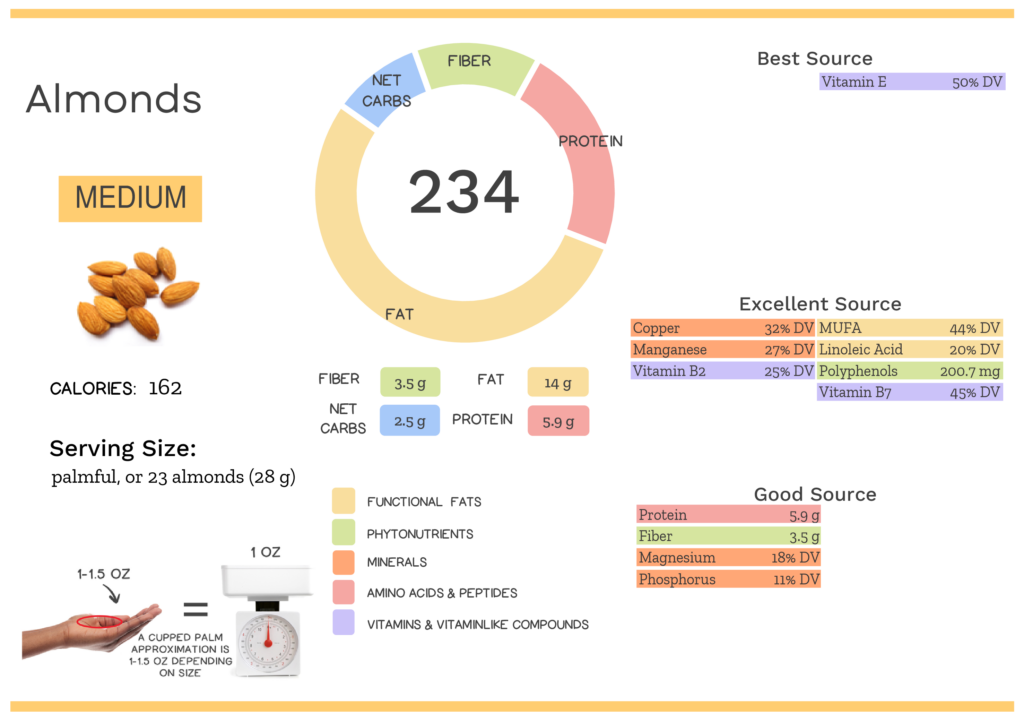
Almond Nutrition Varies With Processing
The Nutrivore Score of almonds varies depending on processing. Specifically, polyphenols and fiber are concentrated in the skin which means that blanched almonds (and products prepared from blanched almonds) contain fewer nutrients. Interestingly, studies have also shown that processing, such as blanching, roasting, chopping, and blending, differentially impact gut health.
| NUTRIVORE SCORE | |
|---|---|
| Almond butter, without salt | 213 |
| Almond flour | 216 |
| Almond oil | 821 |
| Almonds, blanched | 216 |
| Almonds, dry roasted, without salt | 226 |
| Almonds, oil roasted, without salt | 219 |
| Almonds, with skin | 234 |
Impressed by all the NUT-rition in almonds? Maybe your friends will be too!
Health Benefits of Almond Nutrients
Let’s take a closer look at all of the best and excellent source of nutrients found in a 1-ounce serving of almonds and see how they benefit our health.
Almonds Provide 50% DV Vitamin E
Almonds are a fantastic source of vitamin E, providing 50% of the daily value per 1-ounce serving!

Vitamin E is actually a group of eight different vitamins, though the form alpha-tocopherol is the most biologically important. Its most significant role is as a fat-soluble antioxidant, protecting the lipids in cell membranes from oxidative damage. Its free radical-scavenging abilities make vitamin E helpful for cardiovascular health, cancer protection, neurological health (including slowing the progression of Alzheimer’s disease), and any situations where oxidative stress increases (such as during pregnancy). There’s even evidence that getting enough vitamin E can reduce the risk of the common cold! Learn more about vitamin E here.
Almonds Provide 45% DV Vitamin B7 (Biotin)
Almonds are an excellent source of vitamin B7 (biotin), providing 45% of the daily value per 1-ounce serving!
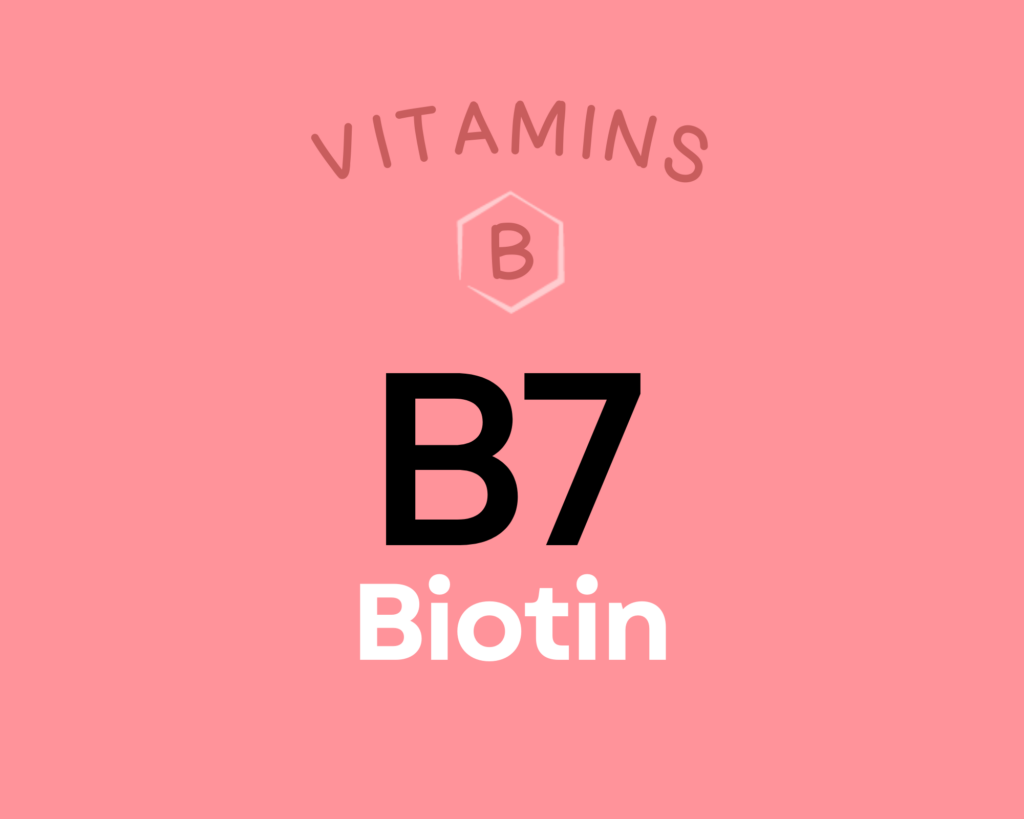
Biotin is a water-soluble B vitamin, also known as vitamin B7. Like other B vitamins, it plays an important role in energy metabolism (serving as a coenzyme for five carboxylase enzymes), neurotransmitter production, cellular function, and the function of various organs. Getting enough biotin can help support healthy nail and hair growth. It’s also particularly important during pregnancy, with low intakes increasing the risk of premature delivery and birth defects. There’s even some evidence biotin can benefit diabetics and reduce functional disabilities in people with multiple sclerosis. Learn more about biotin here.
Almonds Provide 44% DV MUFA
Almonds are also an excellent source of monounsaturated fatty acids (MUFA), providing 44% of the daily value per 1-ounce serving! The predominant fatty acid in almonds is oleic acid.
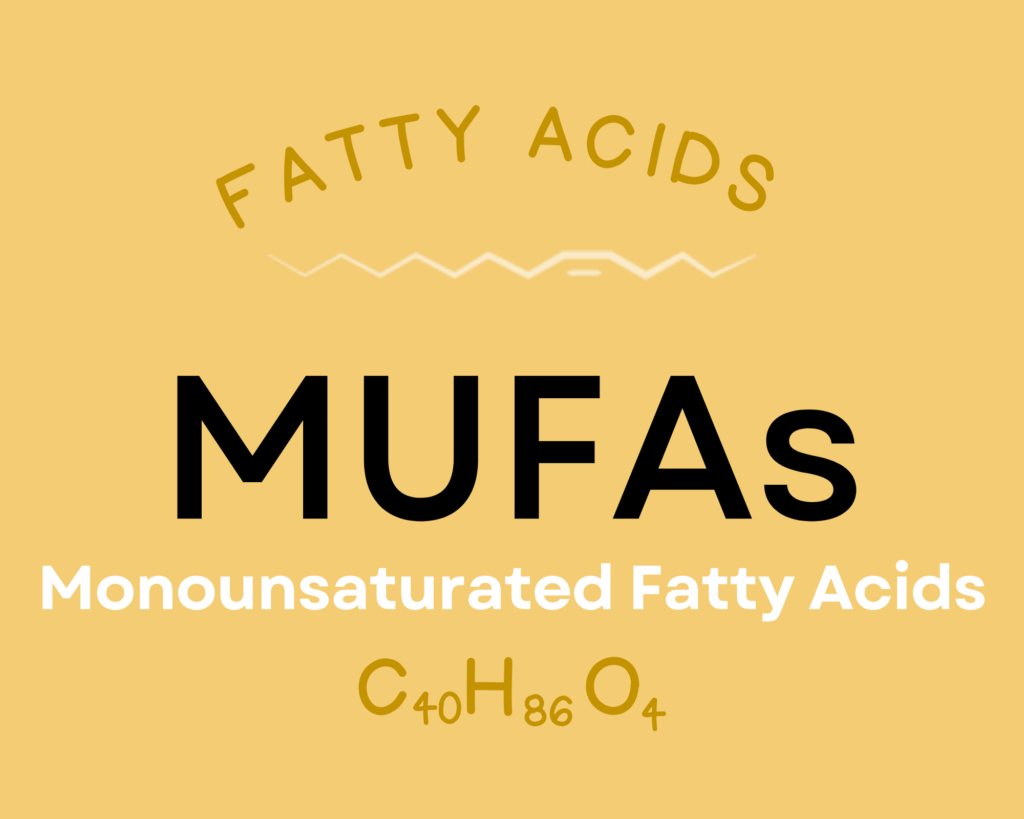
Monounsaturated fatty acids (MUFA), the most abundant of which is oleic acid, play an important role in cellular function due to its presence in phospholipids in cell membranes. Oleic acid is beneficial for cardiovascular health—both in reducing risk factors like high blood pressure, cholesterol, triglycerides, inflammation, and oxidative stress, and in reducing actual cardiovascular disease incidence and events. Oleic acid has even demonstrated anti-cancer activity, with an ability to inhibit the progression, proliferation, and metastasis of several types of cancer cells. Research shows this fat could benefit body weight regulation and obesity through its effects on energy metabolism and lipogenesis. In fact, human trials show that enriching diets with oleic acid leads to decreases in central obesity, abdominal fat, body weight, and food intake, while also possibly increasing energy expenditure! Oleic acid also possesses some benefits for diabetics—influencing genes and pathways involved in insulin signaling and glucose metabolism, as well as helping protect against some complications of diabetes, like diabetic retinopathy and atherosclerosis. Learn more about oleic acid here.
Almonds Provide 32% DV Copper
Almonds are a great source of copper, providing 32% of the daily value per 1-ounce serving!
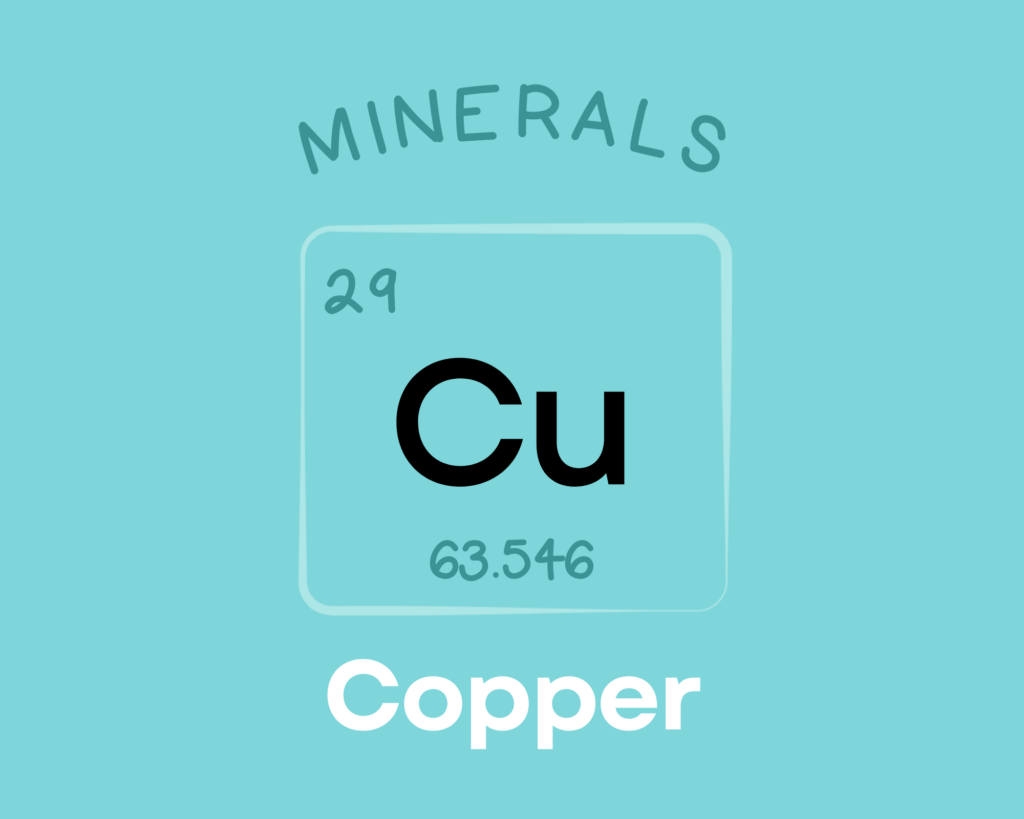
Copper is a trace mineral that’s essential for all living organisms. Copper serves as a component of numerous enzymes and proteins in the body, giving it diverse roles in the growth, development, and maintenance of various organs (including the heart and brain), bone, and connective tissue. Copper is also involved in glucose and cholesterol metabolism, helps regulate gene expression, can scavenge free radicals, and is needed for the production of red blood cells. Learn more about copper here.
Almonds Provide 27% DV Manganese
Almonds are rich in manganese, providing 27% of the daily value per 1-ounce serving!
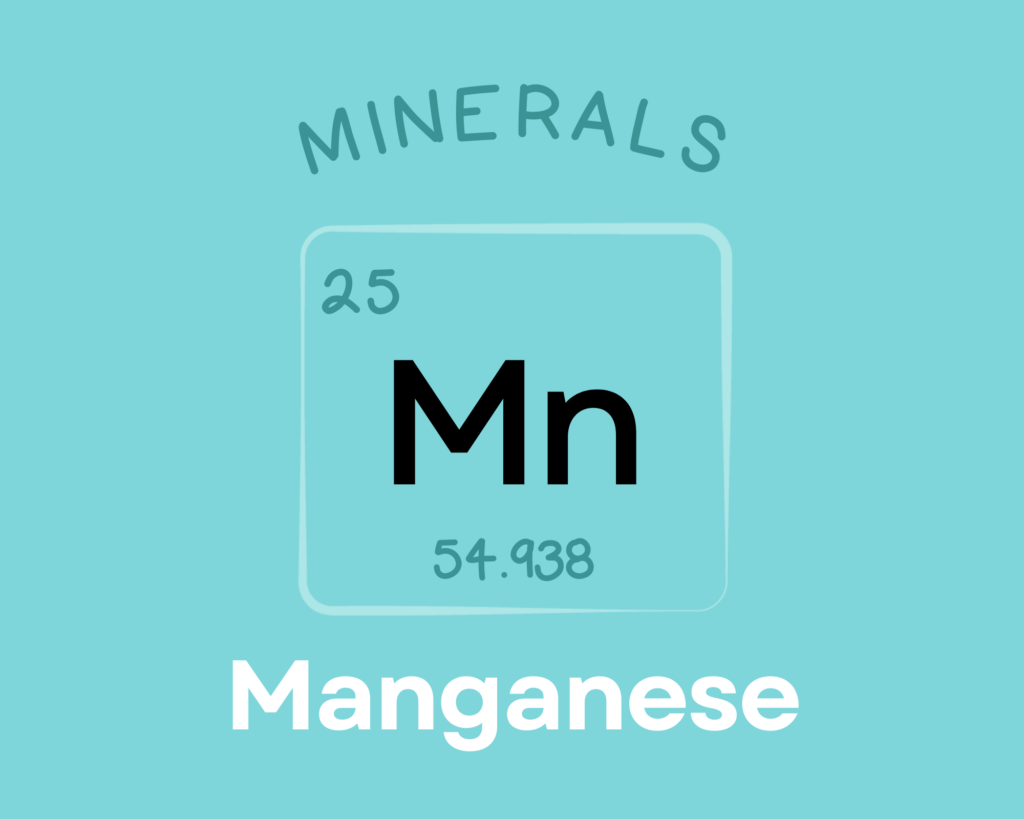
Manganese is an essential mineral that serves as a cofactor and component of numerous enzymes. Through these roles, it’s involved in carbohydrate metabolism, amino acid synthesis, gluconeogenesis, detoxification, lipid processing, free radical defense, bone and collagen formation, and wound healing. Although the research so far is limited, some evidence suggests that manganese can protect against osteoporosis and diabetes, and may even be involved in seizure disorders. Learn more about manganese here.
Almonds Provide 200.7 mg of Polyphenols
Almonds are an excellent source of polyphenols, providing 200.7 mg of polyphenols per 1-ounce serving!
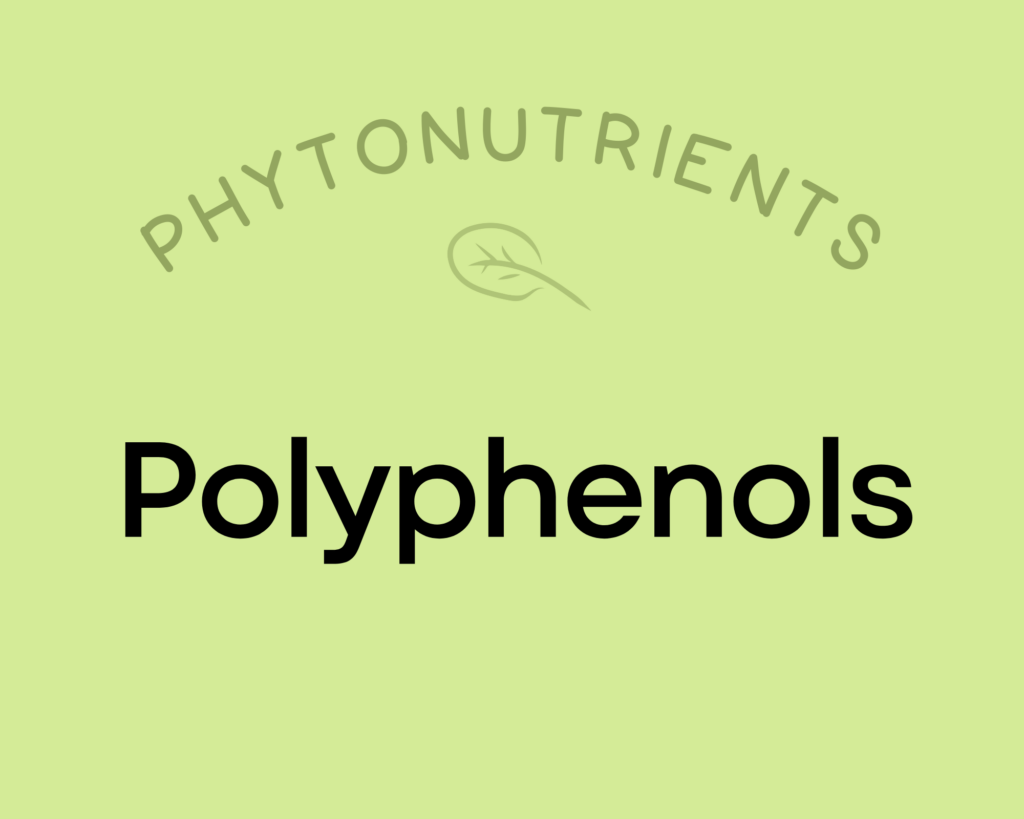
Polyphenols play a huge role in protecting against cancer, heart disease, diabetes, asthma, osteoporosis, neurodegenerative diseases, and other conditions associated with oxidative stress. In fact, a major reason foods like red wine and olive oil (as well as diets rich in both, such as the Mediterranean diet) show up as so beneficial may be due to their high polyphenol content! Along with chronic diseases, supplementing with polyphenols has been shown to protect against infections and reduce the signs of aging. Polyphenols exert their most potent effects by acting as antioxidants—preventing cellular damage by neutralizing hazardous oxygen radicals and improving cellular health as a result (which, in turn, benefits virtually every system in the body). As a result of their antioxidant properties, polyphenols also boost the immune system and protect against both chronic and acute diseases. In addition, polyphenols can help regulate enzyme function, stimulate cell receptors, modulate the functions of inflammatory cells (including T and B lymphocytes, macrophages, platelets, and natural killer cells), alter adhesion molecule expression, affect nerve cells and cardiac muscle cells, and exert antiviral effects. Learn more about polyphenols here.
Almonds Provide 25% DV Vitamin B2 (Riboflavin)
Almonds are also an excellent source of vitamin B2 (riboflavin), providing 25% of the daily value per 1-ounce serving!
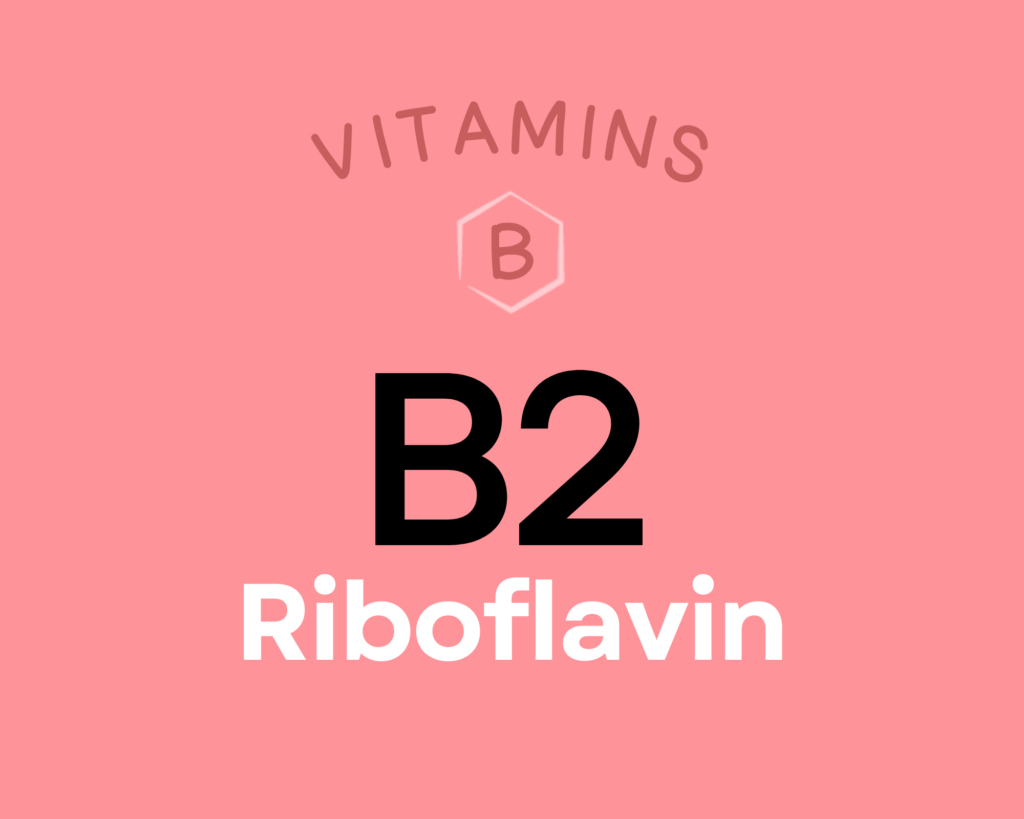
Riboflavin (or vitamin B2) is a vitamin that helps form two important coenzymes involved in oxidation-reduction reactions: flavin mononucleotide (FMN), and flavin adenine dinucleotide (FAD). Collectively, these coenzymes are involved in antibody production, energy production, growth and development, skin and hair health, and the metabolism of several other nutrients (vitamin B6, niacin, folate, and iron). Research suggests a role for riboflavin in preventing or treating migraine headaches, cardiovascular disease, cataracts, and preeclampsia during pregnancy. It also possesses some anti-cancer properties due to its involvement in folate metabolism and MTHFR activity. Learn more about vitamin B2 here.
Almonds Provide 20% DV Linoleic Acid
Almonds are a great source of linoleic acid, providing 20% of the daily value per 1-ounce serving!
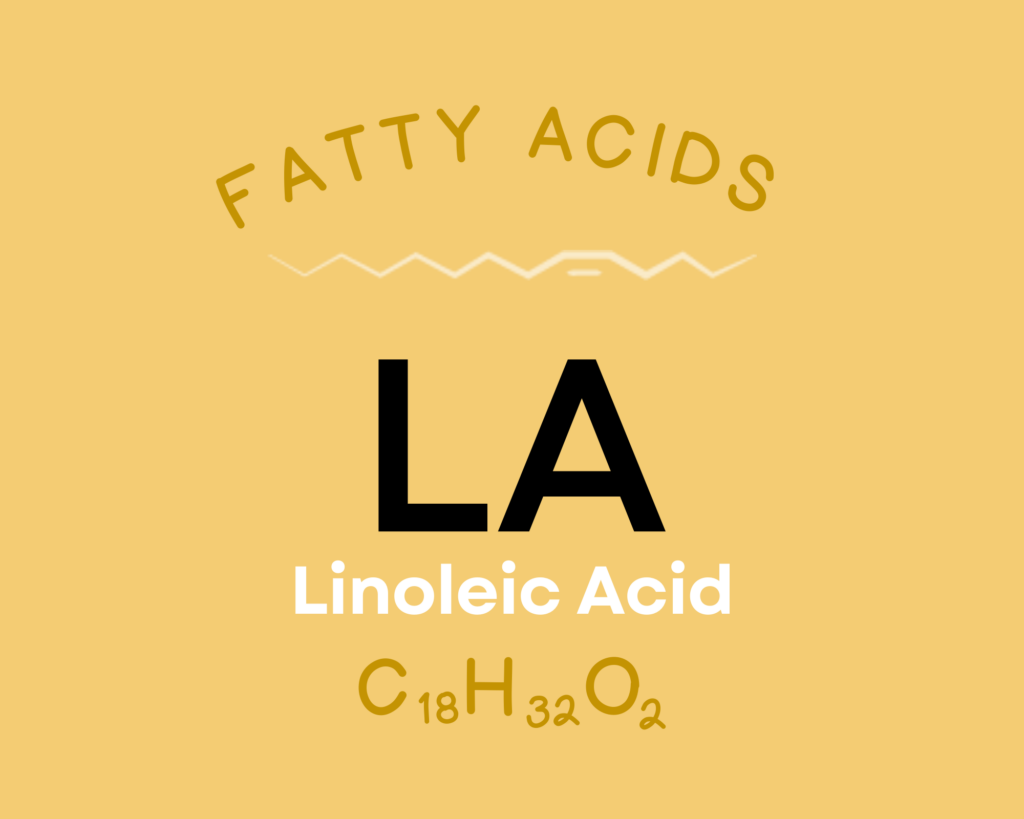
Linoleic acid is the only essential omega-6 fatty acid. Along with being required for human growth and development, it serves as a structural component of cell membranes, plays a role in maintaining skin health and integrity, and is a precursor for bioactive lipid mediators. Although linoleic acid can lower LDL cholesterol levels, research hasn’t consistently shown any protective effect against heart disease. Likewise, there’s mixed evidence (some showing benefit, some showing harm) for the effects of linoleic acid on cancer. Higher intakes have also been associated with depression and obesity, although it may have a protective effect against diabetes. Learn more here.
Want to know the top 500 most nutrient-dense foods?
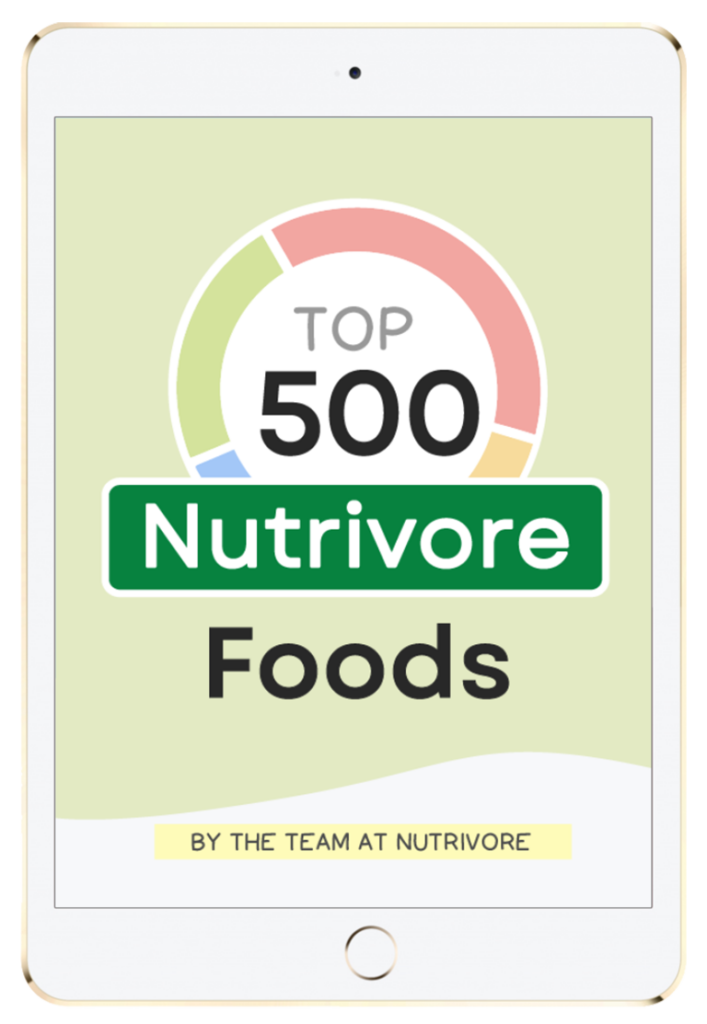
Top 500 Nutrivore Foods
The Top 500 Nutrivore Foods e-book is an amazing reference deck of the top 500 most nutrient-dense foods according to their Nutrivore Score. Think of it as the go-to resource for a super-nerd, to learn more and better understand which foods stand out, and why!
If you are looking for a quick-reference guide to help enhance your diet with nutrients, and dive into the details of your favorite foods, this book is your one-stop-shop!
Buy now for instant digital access.
How Much Almonds Should We Eat Per Day?
Not only do nuts make for a convenient snack food, eating nuts is also associated with a wide range of health benefits! As they say, you can’t spell nutritious without ‘nut’ (if they don’t say that, they should!)
Nuts and seeds are some of the most nutritious, whole-food healthy fat sources out there! They have been associated with lower rates of a variety of chronic diseases and all-cause mortality. In a study of adults at high risk of cardiovascular disease, eating more than three servings of nuts per week resulted in a 39% reduced risk of death from all causes. Nut and seed consumption is also associated with lower body mass index, lower waist circumference, and lower occurrence of type 2 diabetes.
In a meta-analysis encompassing 354,933 total participants, one serving of nuts per day was associated with a 27% reduced risk of all-cause mortality and a 39% reduced risk of cardiovascular disease mortality, and the highest nut consumers saw a 14% reduced risk of cancer mortality. Additional research has shown that nut consumption is associated with lower risk of mortality from respiratory diseases (52% reduced risk), neurodegenerative disease (35% reduced risk), infectious disease (75% reduced risk), and kidney disease (73%).
However, there are some compelling reasons not to “go nuts” on nuts (hyuck, see what I did there?). Health benefits of nut and seeds consumption do not continue to increase beyond about 1 ounce (28 grams) per day, and there’s some evidence that consuming large amounts of nuts daily can increase disease risk (at least for stroke). That means eating more than a palmful per day won’t do us any favors (and may potentially undermine our health). And, nuts should be avoided by people with allergies or sensitivities (in which case, seeds can deliver comparable health benefits).
While not every nut or seed has been extensively studied, we can expect variety to be important. For instance, every nut and seed that has been evaluated in terms of its impact on the gut microbiome shows unique benefits. So again, mix it up as in “mixed nuts!” (Hyuck)
Almonds are among the most researched foods with studies showing that eating almonds protects against cardiovascular disease, diabetes, inflammation, and oxidation, all while improving cognitive performance, skin health and more!
Easily track your servings of Nutrivore Foundational Foods!

The Nutrivore Weekly Serving Matrix
The Nutrivore Weekly Serving Matrix digital resource is an easy-to-use and flexible weekly checklist designed to help you maximize nutrient-density and meet serving suggestions of Nutrivore foundational foods, all without having to weigh or measure your foods!
Includes a 22-page instructional guide and downloadable interactive guides.
Buy now for instant digital access.
cITATIONS
Expand to see all scientific references for this article.
Clements RS Jr, Darnell B. Myo-inositol content of common foods: development of a high-myo-inositol diet. Am J Clin Nutr. 1980 Sep;33(9):1954-67. doi: 10.1093/ajcn/33.9.1954. PMID: 7416064.
Halliwell B, Cheah IK, Tang RMY. Ergothioneine – a diet-derived antioxidant with therapeutic potential. FEBS Lett. 2018 Oct;592(20):3357-3366. doi: 10.1002/1873-3468.13123. Epub 2018 Jun 15. PMID: 29851075.
Normén L, Ellegård L, Brants H, Dutta P, Andersson H. A phytosterol database: Fatty foods consumed in Sweden and the Netherlands. Journal of Food Composition and Analysis. 2007. Vol 20(3):193-201. doi: 10.1016/j.jfca.2006.06.002.
Pravst I, Zmitek K, Zmitek J. Coenzyme Q10 contents in foods and fortification strategies. Crit Rev Food Sci Nutr. 2010 Apr;50(4):269-80. doi: 10.1080/10408390902773037. PMID: 20301015.
Taş NG, Gökmen V. Phenolic compounds in natural and roasted nuts and their skins: a brief review. Current Opinion in Food Science. 2017. Vol 14:103-109. https://doi.org/10.1016/j.cofs.2017.03.001
USDA Food Central Database: Nuts, almonds
Watanabe T, Kioka M, Fukushima A, Morimoto M, Sawamura H. Biotin content table of select foods and biotin intake in Japanese. Int J Anal Bio-Sci. 2014. Vol 2(4):109-125.


